Propagating Amaryllis from seed
I've decided the best way to help preserve this critically endangered species is trying to grow it from seed, which should be just about ripe now. If anyone has any experience of growing Amaryllis from seed, i would be most grateful to hear from you.
{{gwi:429276}}
Comments (44)
houstonpat
17 years agoI have many years propagating from seed. What would you like to know? It's quite easy as long as you have fresh seed. I usually use the float on water method, mixing rooting hormones into the water.
raydio
17 years agoI float the fresh seed on water at a warm temperature to which I've added household hydrogen peroxide (I think it's 3.5%), a tablespoon to a large salad dish of water. I change the water every 2-3 days, rinsing the seeds as well.
They are in bright indirect light. I generally transplant when they are 3-4 weeks old.
Related Professionals
Walnut Landscape Architects & Landscape Designers · Westwood Landscape Contractors · Brandon Landscape Contractors · La Vista Landscape Contractors · Lemay Landscape Contractors · Methuen Landscape Contractors · North Highlands Landscape Contractors · North Lauderdale Landscape Contractors · North Potomac Landscape Contractors · Oakland Landscape Contractors · San Bruno Landscape Contractors · Washington Landscape Contractors · Whittier Landscape Contractors · Baileys Crossroads Landscape Contractors · Tucson Swimming Pool Buildershaweha
17 years agoThe most convincing results are obtained by sowing seed for seed, upright, using tweezers, to position them into lines so deeply that they will be just covered afterwards.
I use 50 cm balcony boxes and I drill numerous aditional drainage holes (0.5 cm of diameter) into the bottom.
I apply a thick layer of Seramis for drainage, then fill up with coco fiber substrate, FRESHLY pepared from "coco bricks" then form the mentioned lines with a broken ruler and I place every single seed, accurately beside one another.{{gwi:17096}}
Later....
Just before transplantation, demonstrating the seedling bed profile:
{{gwi:400823}}mariava7
17 years agoWow!!! I just love this forum! I have never seen such unselfish sharing of information and growing techniques anywhere else but here. The time and effort to visit the forum, answering questions repeatedly, taking photographs, uploading and downloading, does show one's passion for this plant amaryllis/hippeastrum. My deepest appreciation to everybody.
Hans...as always, great photos and info! Good Job!
Ifraser...do a search on seeds or planting seeds in this forum and you will be surprised on how much information is waiting for you.
What is the name of that specie? It is so beautiful, and I agree that such should be preserved.bluebonsai101
17 years agoHi, this looks like H. psittacinum to me...the more common form, although none are common of course. If this ID is correct I can also say that these seed are very, very easy to germinate and grow on as I have had mine for around 15 months now and the bulbs have put on some nice weight. I simply planted the seed in my germinating mix (1 part potting soil, 1 part pine bark, 2 parts perlite) and barely covered them.....just like in nature ;o)
I also took steps to make sure this is not rare for long. That is, I sent around 50 of the seed I got to a dear friend in India and they immediately put the seed into TC rather than waiting for the seed to germinate. They have already gone through atleast one cut and they now have hundreds of them. We hope that in 3 years there will be thousands and these can be available to those that want something that in my opinion is more beautiful than any hybrid I have seen. We have also done this with perhaps 10 species total from Brazil and a few F1 hybrids (Calyptratum x Striatum are doing incredibly well, obviously taking after the striatum) so hopefully these will be as common as papilio in a few years :o) Dan
raydio
17 years agoDan~
Your efforts are most interesting! Do you do this sort of thing often? Do you have a website?
Such efforts to replenish dwindling natural resources like this interests me greatly.
Robert.
soultan
17 years agoIf I had this plant, I would try to propagate it as well. It has very nice coloration.
bluebonsai101
17 years agoHi Robert,
Yes, I have sent many. many things to India in the past year or two....mostly Amaryllids of various sorts!! This includes mostly species and F1 hybrids of Hippeastrum, but a few Crinum as well (species only). I have been trying to get some Griffinia (I only have one) so that I can send them to him as well....I think these are very special plants!! My friend in India was originally trained in orchid TC, but his love is Amaryllids and they have a tough time tracking them down for whatever reason so I am happy to get him fresh seed whenever I can. I really prefer the species to the Dutch hybrids, but I know that is just a personal thing. Unfortunately, the species are very rare and hard to find at anything resembling a decent price. I know one person that sells them and asked him for seed so that we could propagate them in massive numbers but understandably he wanted to protect his interests.....oh well :o)
Here is my one lonely Griffinia:
{{gwi:30867}}raydio
17 years agoI'm very interested in the species too. I only have (what I believe to be) H. striatum and H. papilio at present.
Looking to add H. puniceum (equestre), stylosum, psittacinum, reginae, vittatum, evansiae, and cybister. But then, if I found any other species, how could I not want them as well? ;-)
I think if psittacinum were available in the US, it would sell.
Robert.
lora_in
17 years agoHi ifraser25,
I prefer to use the same method as Hans-Werner. I find that it is easy to damage roots when transfering from water to soil. I applaud the task you have taken on. Way too many species are dissapearing at an alarming rate.
bluebonsai,there is a Griffinia on ebay right now. Would you like a link?
Also,are you interested in H. puniceum seed? I have a fresh batch.Raydio,drop me a line. I have those H.puniceum offsets available that we spoke about this summer. Lora
raydio
17 years agoLora~
You're right about easily damaging the delicate root on water-sown seeds. This was the first year I had tried that, sort of as an experiment, to test the technique.
I have germinated them on potting soil with either vermiculite cover or more soil too. I had excellent results and not having to transplant them is a plus. I liked that they had the flat of soil to grow good roots from the start, much healthier than when I transplanted the water-sown ones to cell-packs.
I had my seeds laid flat in the soil, but will try them set as you and Hans do. (BTW, Hans, those flats of babies are gorgeous!)
One plus about potting mix sown seeds is outdoors, where I started mine, with the air circulation, there is less chance of fungus starting. If you're not careful with the water-sowing, the debris (from disintegrated seed coats from old dried seed coats) can easily foster bacterial infection.
Robert.
bluebonsai101
17 years agoRobert, I would say that equestre and vittatum are very common and can routinely be had for $5-6 for a blooming size bulb. These have been heavily propagated in India and Thailand along with papilio and should not be considered rare at all at this point in time. If you have anything interesting to trade in the way of species that I do not have I can send these to you.....my vittatum are marked well.....my others not so well, but I get them from India routinely and would be happy to trade :o) Dan
gardenking21
17 years agoI managed to get two seeds to germinate on some of those little peat pots last year. Would seeds from last year still be viable (I have had them stored at room temp)?
brigarif Khan
17 years agoHello, Dan
WHO IS THIS INDIAN FRIEND OF YOURS, IS HE A MEMBER OF THIS FORUM, IF NOT, CAN YOU GIVE ME HIS CONTACT,THAT IS IF HE DOES NOT MIND.
ARIFOklahoma_Tim
17 years agoI noticed that a couple of people mentioned adding something to the water before floating the seeds in it, and I'd like to know what difference that makes. A few years ago, I used plain tap water (which had sat out over night to allow the chlorine to dissipate) and it seemed to work fine....
raydio
17 years agoI add some 3% hydrogen peroxide for its antibacterial effects and for the oxygen it supplies to the root tip.
brigarif Khan
17 years agoHello.
My future line of action based on my experience is.
Use 6 inches deep trays. 5 inches of moist coarse sand and coco (half & half mix), top it with an inch of moist coco husk. Depress 1/2 inch chennels with a cane and place a day old good seeds atleast an inch appart and cover with moist coco. Encapsule in clear plastic and leave it in shade.It takes about two weeks to germinate. Start feeding with 1/8th of normal strength when the seedlings have two leaves, slowly increasing the strength to 1/2. Transplant seedlings coming spring and feed normaly.
ARIFsoultan
17 years agoArif,
I will try your strategy, when I get my seeds. I am cross pollinating right now, because I have only one bulb per variety right now. The first true pollination will be Lilac Wonder in a few weeks. But right now I tried. AlfrescoXGold Medal and Gold MedalXAmalfi. The first one is always the pollen donor. Will see how the seeds turn out if there will be any seeds at all.
I don't want to lose my flowers too early, so I only pollinate them just before they start to wilt. This way I can enjoy the flowers the longest I can. The next cross will be AmalfiXMilady, and then MiladyXBenfica. And right now I have no more bulbs in bloom. Ten bulbs are in development though. There is a race going on which one will bloom first.soultan
17 years agoThis is my way of marking them. The first one is always the pollen donor, because that is the earlier flower. This is not scientific whatsoever. I have about 150 bulbs Only 5 are blooming and 10 in pots in the kitchen window. As one starts blooming, I move it to the living room, and plant another bulb to place it at the end of the line in the kitchen window. I think Candy Floss will be the next one to flower for me soon.
These all are forced bulbs. This will be the first year, if the construction of the new house allows it to me that I plant the bulbs out after they flowered inside.
I am experimenting right now.pennys2006
17 years agoHI I BROUGHT SEEDS ON EBAY I KNEW NOTHING ABOUT SOWING THEM SO I LAID THEM FLAT ON SUFACE OF SOIL COVER LIGHTY AND PUT THE POT IN A ZIP BACK AND TO MY AMAZMENT ALL GERMINATED AND ARE NOW DOING WELL SO IF YOU DONT WANT ALL THE FUSS JUST SOW AND SEE IF YOU GOT LOADS OF SEEDS YOU COULD ALWAYS TRY 2 OR 3 DIFFERENT WAYS I LIKE EVERY THING SIMPLE ALSO I DONT KNOW HOW FRESH MY SEEDS WERE I KNOW FOR BUYING THEM TO RECIEVEING THEM WAS 3 WEEKS + 9 DAYS THEY WERE LISTED FOR SALE SO IF YOU HAVE FRESH SEEDS I CANT SEE ANY PROBLEMS AT ALL, good luck PENNY. o by the way if i remember rightly it was about 9 days when i first saw signs of germination.
plant_guy
17 years agoI have been able to germinate almost anything by slightly moistening a paper towel and putting it in a ziploc baggie in a cool place for about a week (with the seeds, of course).
Plant_Guy
Here is a link that might be useful: My Amaryllis Page
whoduthunkit
14 years agoI was surprised by 6 Amaryllis growing in the ferns at the base of the woods near my house. I have lived here for 12 years and have never seen these before. I potted most of them and left two to their own devices. I want to make sure I have the best chance of getting seeds for propagation. How much sunlite should I give them? They were growing wild in a place where they got only morning sun.
dvgendreau_hotmail_com
13 years agoHow do I determine when the seeds are ripe and ready for harvest? Nobody addressed this in their responses. Please do, I need to know soon. Also, why do some Amaryllis develop seed pods while others just don't? How can I encourage them to set seed pods? Do the seeds sprout at room temperature,68-72 degrees or must they be kept warm? If warm, how? When propagated by seed, how long does it take to develop into a bulb ready to flower?
dondeldux z6b South Shore Massachusetts
13 years agoHi Diane,
Determining when the seed pod is ready for harvest is easy..the pod starts to turn a yellowy green and then progressively turns yellowy brown. The pod is divided into 3 chambers and when one of the chambers starts to split and you can peek inside, then it's ready. Now some would leave it on the stalk until all three chambers split open, but I cut mine off earlier..as soon as the first chanber starts to open.. set it in a labeled dish and in a few days it continues to dry and I usually help it along, being impatient and open them myself. Then carefully remove the seeds from the 3 chambers and remove the chaff and just let the seeds dry for several days before choosing your method of germination from the posts above. The reason I don't leave them on the stalk until the last segment opens fully is that if you inadvertently hit the stem, the seeds will go flying all over the place, and of course if you're outside them the wind will make things impossible. Amaryllis seeds are very sturdy and don't worry about them..they will be just fine. In-fact, I have broken off the scape several times a few weeks before the seedpods are actually ripe and just stick the remainder of the stem in water and they will continue to ripen.
As far as why some flower set seeds and some don't, it may have been pollenated by another flower that wasn't compatible, due to ploidy (I'll let someone else explain that to you). And if you've selfed a flower, some are self sterile. If you do pollenate several flowers with one another sooner or later you will get seeds, and a healthy pod can give you 50 to 80 seeds, more that you ever need of one cross. Now, if you don't know.. the stigma curls up and the 3 lobes at the end open wide and get sticky, that is the time to put your pollen on..you can do it several days in a row to assure that you've dabbed your stigma when it is most receptive.
I germinate all my seed at room temperature just don't sit them in the sun when they are soaking...and you can expect to see a flower in 3 years... maybe a little sooner or a little later. Now that's not bad at all.. gives you some hope that you can do this for several years and live to see the results..!
Now I am not one of the scientific minds on this forum, so hopefully someone else will chime in and give you their thoughts as well.
Good Luck..sounds like you've already got some seedpods forming..let us know how you make out:-)
Donna
dinobobolino_yahoo_com
13 years agoAmazed at the info.I am trying this for the first time. I notice some of you use bags etc .I have year round temps in the 70-90 range . Do I need to shade these starters or could I use a typical geen house effect with misting sys? I am unsure of what seramis is would pea stones covered with sand then growing medium and layer(1") of potting soil be ok? How long from germination to transplant ,I noticed someone metioned 15 months? Many thanks . Dean
greatgollymolly
13 years agoI soaked my seeds in water until 95% of them sprouted, transplanted them to potting soil and kept them covered with plastic. Then as they grew I transplanted them to larger containers. I have them all growing together at this point. They lived inside for most of their life but have been outside since last fall and over winter on my back porch continued to thrive. It was amazing how the adult plants' leaves wilted and died in the cold, but the babies never did. They stayed green even in freezing weather. Now they are growing like a weed. I undertand it takes 3 years. In looking at the way these are taking off I'm wondering if they might flower by next spring. I think I have about 12 plants in a window box pot and soon wll have to give them their own individual pot. I love my amaryllis. They are so hardy and nothing phases them. They return to bloom year after year with no fuss or muss.
capn33444_windstream_net
12 years agoI BOUGHT AN AMARYLLIS FOR CHRISTMAS 10 YEARS AGO. IT HAS DEVELOPED IN A LARGE POT INTO 5 BULBS. THIS SPRING I HAD 10 STALKS ALL BLOOMING AT ONCE. SPECTACULAR. I JUST CAME IN FROM WATERING AND HAVE HARVESTED THE SEEDS FROM THIS SUPER PLANT TO SEE IF I CAN GROW SOME MORE FOR FAMILY AND FRIENDS WHO LIKE PLANTS. TOO HOT IN TEXAS TO GERMINATE OUTSIDE SO WILL START THEM IN THE KITCHEN AND SEE WHAT HAPPENS. WISH ME LUCK.
oleg9grower
12 years agoI germinate my seeds of amaryllis in the glass cup Petry:
{{gwi:429277}}
After germination I planted these in pot:
{{gwi:429278}}oleg9grower
12 years ago[b]joshy[/b]
Thanks :) When you set seeds as the pod is ready for harvest in the sterile cup Petry with sterile water, the seeds will be healty. I never let the seeds dry. I set my seeds immediately, and these can to germinate on 4 day.
[quote]What kind of Hippeastrum do you grow?[/quote]
Many, species: H.papillio, older hybrids as johnsonii and other, and new varieties as Charisma, Temptation, Samba, Limona et cet. :)
And you?oleg9grower
12 years agoDo you remember the seedlings, which I showed you in June?
Here's how they grew up to October, they already have five leaflets.
{{gwi:429279}}joshy46013
12 years agoVery nice!!!
I was reading this thread, what ever happened to the TC seeds that Dan bought from Brazil?
I don't think these plants towards the top are rare in cultivation because no one tries to propagate them, they're rare because they're difficult to grow to maturity and even more difficult to flower. I've known a few people that have grow seed from Brazil to maturity and many have ended as hybrids.
joshy46013
12 years agoOleg,
I have maybe three bulbs of H. psittacinum and they're pretty slow growing and they're very susceptible to rot and bug attacks, I've not had the easiest time with them but I have started to care for them more and have had an easier time!
I think partially the reason H. papilio and H. cybister are so common in cultivation now is considering Fred Meyers, he crossed the best clones of each species to create a more tough and tumble plant. As well, these two species are among the easier to grow along with H. striatum, H. aulicum and H. puniceum which are also fairly common.
Many Hippeastrum species I don't think could withstand cultivation in the casual growers hand UNLESS you live in an area with favorable conditions. You must study many of the species individually to know exactly what conditions are best considering they're found in a multitude of places including swamps AND deserts.
I know many seasoned growers of Hippeastrum still have a very tough time with many species and many flower very seldom if at all. H. papilio is from a mild forest which is easily imitated by indoor conditions, it can be grown epiphytically, lithophytically or the usual pot of soil so it can handle a large range mediums. It grows in brightly lit places to shady areas so lighting usually isn't much of an issue. H. papilio can be maintained as an evergreen plant which gives a huge advantage against rotting too and it's resistant to many pests and diseases where as most other species are not!
If you were to try growing Hippeastrum pardinum with the same idea of H. papilio you would more than likely fail, it needs a incredibly dry rest period during opposing months; any water during the dormancy will result in rotting and quite quickly! It doesn't always flower well *some sources only see flowers every ten years or so* and is usually a winter growing species, it relies on a lower amount of sunlight and ultimately much less water, put this in the hands of a typical "amaryllis" grower and they're set up for failure!
This isn't to say that it's impossible to grow many of these species successfully because it isn't but you must educate yourself. While the hybrids and some species (h. papilio) are very forgiving, most others are not.
I think it would be spectacular to see these grown in larger quantities but sadly I don't foresee that as most aren't willing to invest the time and energy they take. :(
It's also a big misconception that ALL Hippeastrum need light water in fear of rotting, H. breviflorum, H. harrisonii, some forms of H. vittatum and H. angustifolium can be found in bogs, swamps and other wet areas, many are completely submerged throughout their growing seasons and only slightly dryer during dormancy, these species could create a more resistant plant in future breeding as well, I think these are quite beneficial as parents to new hybrids but their ease of growing is nil to none.
Josh
jodik_gw
12 years agoWhile all plants have the same basic, underlying requirements... as in support, moisture, light, nutrition, temperature, etc... they all require these needs in different amounts and at different seasonal intervals. Therefore, growing a particular plant takes research and knowledge.
Hybrids are generally created for the retail market, and are very often bred with the average grower in mind. Species types of plants are generally more difficult to grow as we are taking them out of their natural environment and forcing them to grow in a situation they are not adapted to.
Add to all that the myriad fallacies floating throughout the general gardening world lacking in knowledge of science and physics, and an industry with one purpose in mind, that of profit, and it's easy to see why successes are not always great.
There's no such thing as a green thumb... it's all applied knowledge. It's what you know about a particular plant and its origins and needs.
It's generally not the amount of moisture given that's at odds with the bulbs' needs... it how fast that moisture drains away from the root zone and what is generally thought of as soil, and used as substrate throughout the gardening world... especially as it relates to what's available retail.
If the knowledge circulated through the world of gardening were more about science and physics, and less about what brings profit for the industry pushing the available products, there would be more growing success within the general world of growers.
In short, there's very little viable information circulated... but there is a lot of fallacy and misinformation to sort through if a grower wishes to be successful.
In layman's terms... healthy plants begin at the roots, and how many people are actually aware of what happens under the soil surface, and why they're doing the things they do?
Jessica Rhind
9 years agoI found this blog while looking for advice on how to grow amaryllis from seed. 2011 to 2015 -big leap. I feel like I've gotten to the end of the book and there is no ending -what happened to everyone's efforts with their various amaryllis species, rare, hybrid or species? Argh! Are there any seeds out there for trade/sale (crinum, griffinia, etc?)
I will try both methods with my seeds (I purchased a mix of 40 off ebay) and I have time to watch them grow for 3-4 years up here in Ontario. Wish me luck.kaboehm (zone 9a, TX USA)
9 years agoJessica, search this forum for FAQ and there's loads of information there too!
K
Michal
8 years agoa question about water: farm that sent me Hippeastrum seeds wrote that they're not using floating method since they have "bad water" and it doesn't work for them. Anyone knows if hard of soft water might be giving better results? Couldn't find any info about that. Because tap water in our town is really really really hard. Of course I can use accumulated rain water instead. Any thoughts?
Even using other methods I bet more suitable water should help as well for them to germinate.
dondeldux z6b South Shore Massachusetts
8 years agolast modified: 8 years agoMichal,
Our water used to be hard and around the 1980s when too many people were complaining about stained tubs and the like they started to dump lime in and now our water is alkaline, 7.8 because the town dumps lime in the water to counteract the minerals. I have never had any trouble germinating seeds in our water.
I guess if rain water was collected in a clean container not falling through trees but from out in the open being acidic that might work too. I've not tried rain water but my husband when watering his rhododendron seedlings likes to use rain water when he can.
If you think that your hard water might be too hard you could try bottled water which I suppose might be either hard or soft, you could test it.
Donna☺☺
Here are some seedling I recently germinated and every one germinated! Some people put a few drops of hydrogen peroxide in the water also but I usually don't.
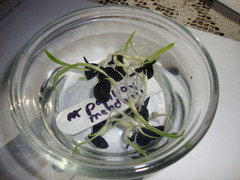
Michal
8 years agoany ideas how strong the peroxide solution for the water should be not to overdo it? My bottle says it is 30% which looks a bit strong compare to what raydio wrote here earlier. So guess like up to 1% (30:1 with water)?


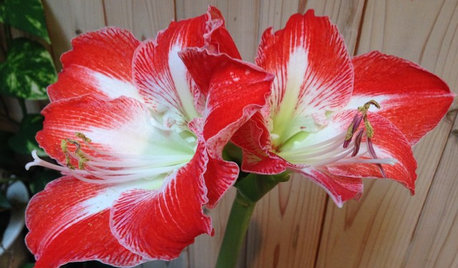

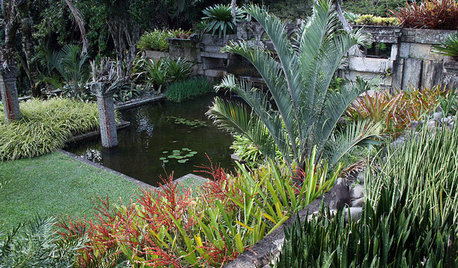
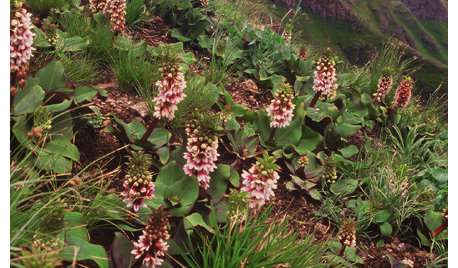
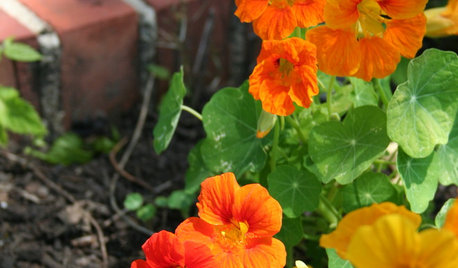

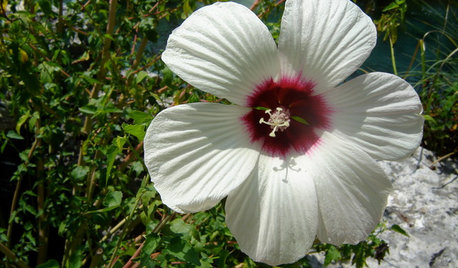







brigarif Khan